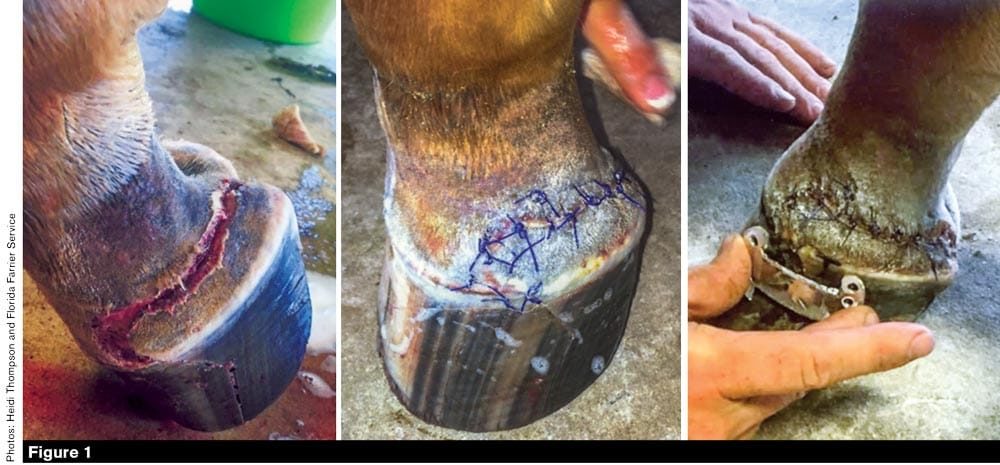American Farriers Journal
American Farriers Journal is the “hands-on” magazine for professional farriers, equine veterinarians and horse care product and service buyers.

This case involves my client Heidi Thompson’s 18-month-old filly, Maybeline. On June 9, 2017, she was turned out after it had been raining. She was out in the arena because it offered the driest surface at that time. Maybeline managed to find a puddle and slip. Her foot went under a wire fence, which lacerated the medial side of her hoof. Dr. Valerie Biehl, Maybeline’s veterinarian, came out to examine and suture the wound that day.
When Heidi contacted me to come by about a week later, the stitch pulled and Maybeline ended up with quittor in the medial wing of her coffin bone. At that point, I advised Heidi that the animal most likely needed to go to surgery. Heidi…